| Open Edge Westmoreland Plates |
| These patterns date to Westmoreland's production of the early 1900s, though not in Carnival. Westmoreland revived the molds in the 1950s and 1960s to produce milk glass and again in the 1980s to make contemporary carnival glass. Found primarily in blue and amethyst which would suggest Westmoreland production. However, the molds were probably purchased by Summit Art Glass who made the other colors these plates are sometimes found in including vaseline and a red/orange opague color called Geraldine's Delight.
Easily found on eBay in Westmoreland milk glass but scarcer in iridized glass. |
 |
 |
 |
| To the left is "Three Kittens", in the center "Three Roosevelt Bears" and to the right is "Three Owls". These plates are typically found in blue or amethyst, however, the Kittens plate can be found in vaseline which is a Summit Art Glass color.
|
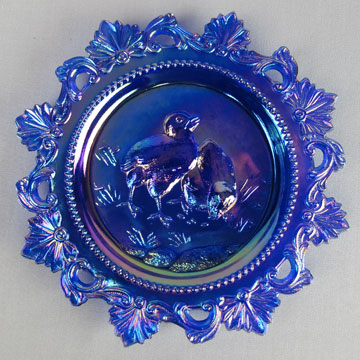 |
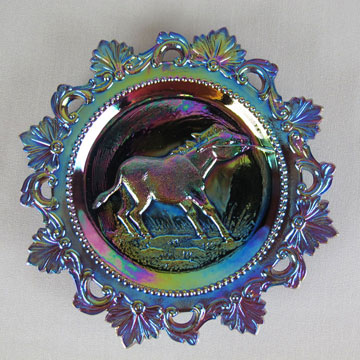 |
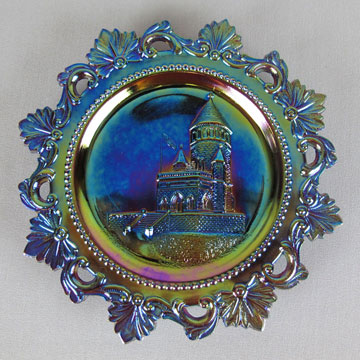 |
 |
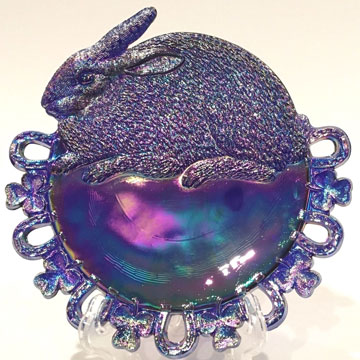 |
 |
| In the upper row of photos, these 7-inch blue plates; with baby chicks, donkey and the Garfield Memorial; have the mark with the words Westmoreland in a circle around a stylized "W," which they started using in the early 1980s. On the lower row of photos, the "Lucky Rabbit" plate in Geraldine's Delight on the left and in blue in the center. Geraldine's Delight is a Summit Art Glass color. A sailboat plate is at the right. |
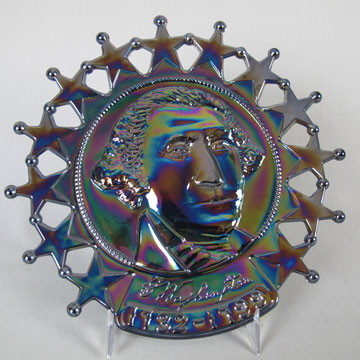 |
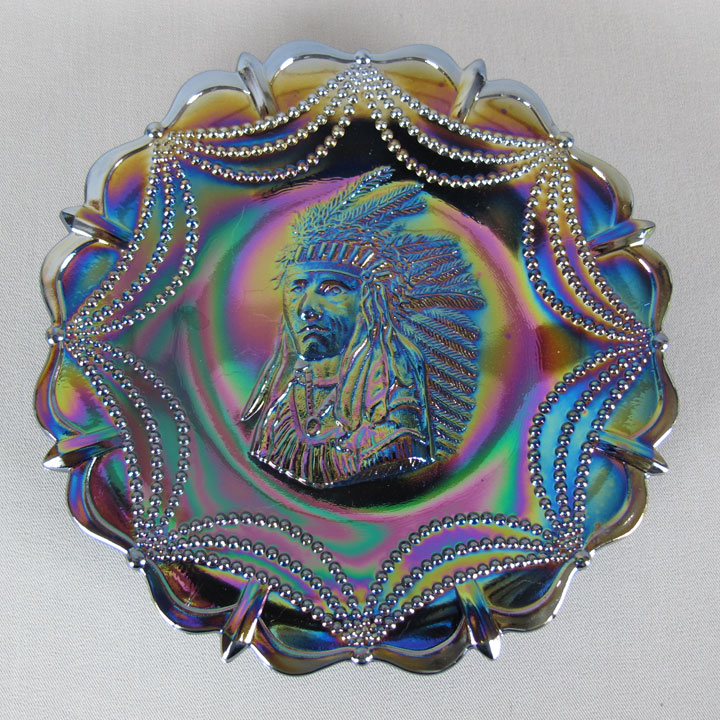 |
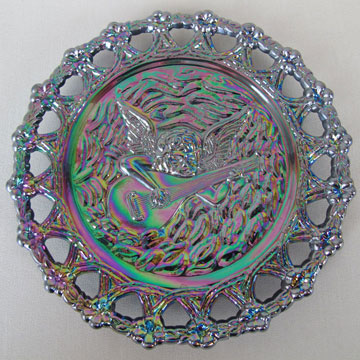 |
| The plate on the left commemorates our first president, George Washington. The photo in the center has a portrait of an American Indian surrounded by beaded drapery. This indian plate is the only plate in the series without open edges. The plate on the right depicts a cherub playing a stringed instrument. |
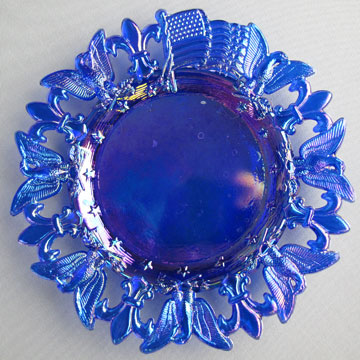 |
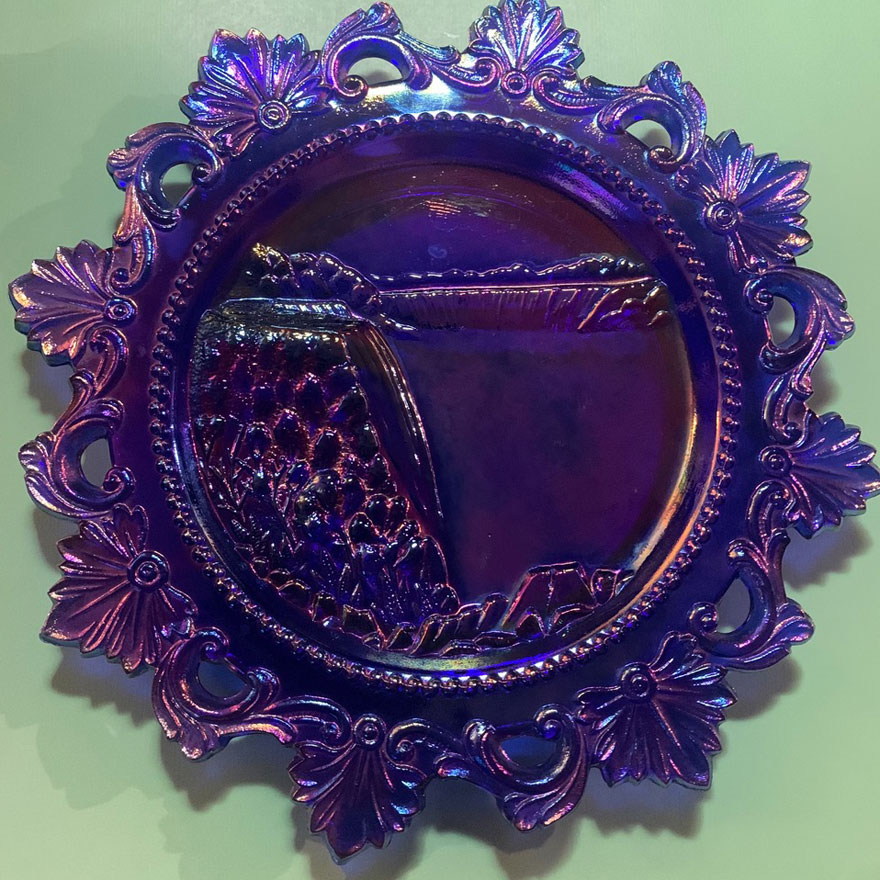 |
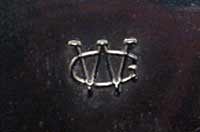
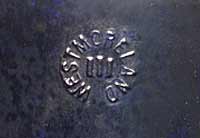 |
| Above left is an unmarked patriotic plate featuring the American flag and eagles around the outer edge with a plain center. The center photo is a plate depicting Niagra Falls. The Niagra Falls plate is marked with the full word "Westmoreland" mark.
Most of the above plates are marked with either of the two Westmoreland marks shown above to the right. The top mark of a "W" imposed over a "G" was used from 1940 to 1980. The lower mark that spells out "Westmoreland" was used from 1982 to 1984. Some plates use these marks even though they may not have been made by Westmoreland. Summit Art Glass made a vaseline Kittens plate and the Geraldine's Delight Rabbit plate and these too are marked Westmoreland. Summit thus acquired the molds and began making the plates without removing the older marks. |
| The photo above to the right is an ad from the 1906 Butler Brothers catablog. The ad shows a "Teddy Bear" plaque and lists for 89 cents adozen.
One other plate is known in the Westmoreland series from the 1900s. It has cupid and a greek goddess as its theme. While this last plate is easily found in milk glass from the 1950s and 60s, it has not yet been found in carnival. |
 |
















